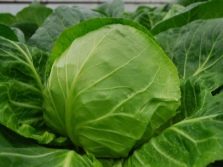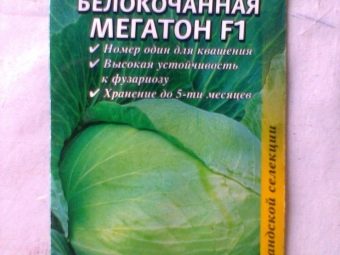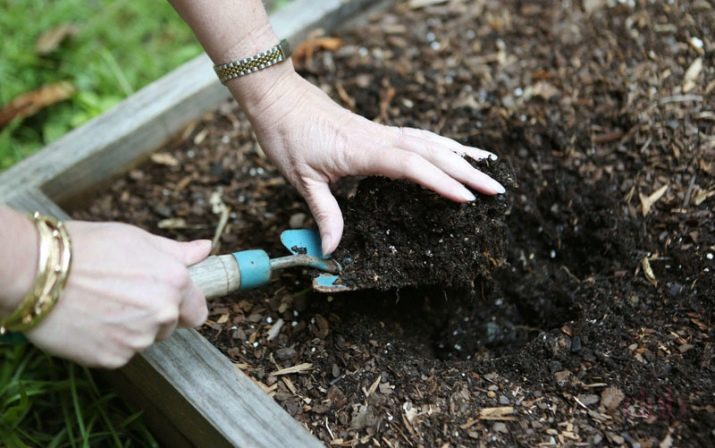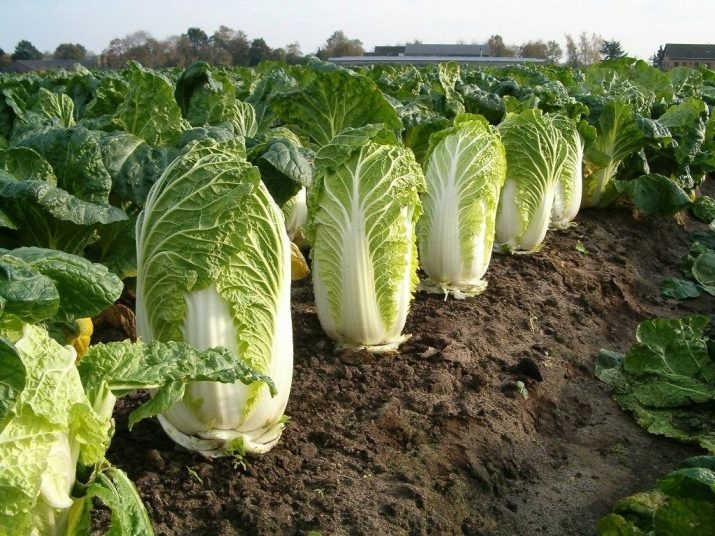How to sow cabbage on seedlings in an unheated greenhouse?
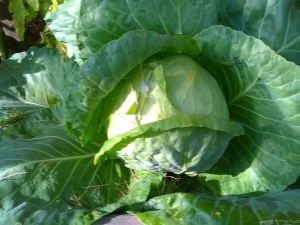
Cabbage can be found on almost any table as part of a variety of dishes. Classic cabbage rolls with cabbage leaves, braised broccoli with mushrooms, Chinese cabbage in a salad - this is only a small part of the possible use. This vegetable of the cruciferous family is used in many recipes of traditional medicine and home cosmetology, making various infusions and compresses, it is not for nothing that in Russia she was always called the “mistress”.
Special features
In our country with the onset of spring, cabbage can be seen in almost every garden or at the dacha. However, without the initial knowledge of agronomy, it is quite difficult to grow strong cabbages from ordinary seeds. Not too capricious to temperature, cabbage loves a lot of moisture, sunlight and fertilized soil. The best conditions for planting seedlings will be the construction of a greenhouse made of polycarbonate or plastic film.
Cruciferous vegetables can be of several types:
- Late-seasoned - practically not eaten raw and is perfect for conservation.
- Mid-season - such a vegetable can be eaten as soon as it reaches maturity, and it can also be used to make stocks for the winter.
- Early maturing - small loose cabbages weighing up to 1.5 kg. This type of crop brings the average yield, but requires special conditions for storage in cellars or canned.
In addition, you can pick up a variety of hybrid varieties, bred by artificial selection. The yield of such cabbage can reach up to 40 kg from 10 square meters. m
Regardless of what kind of seedlings were planted in the ground, any cabbage will ripen no earlier than August. Even an ordinary unheated greenhouse will speed up the ripening process and get a harvest in late June or early July. If the greenhouse is equipped with special lighting, then it is possible to regulate not only the air temperature, but also the length of the daylight, which will also increase the growth of the vegetable.
It is not necessary to plant already sprouted seedlings in a greenhouse, it is also convenient to grow it directly in it, adjusting the temperature of the air and soil.
The process of growing in a greenhouse
Even a beginner will be able to grow cabbage inside the greenhouse, as for this it is enough to study all the subtleties of caring for the vegetable itself and for the seedlings. Planting seeds begins in February, and the planting of ready seedlings begins around mid-April. Experienced gardeners can take risks and plant seeds in December. These seedlings will require additional illumination by fitolamps during the winter months, but the harvest can be taken as early as early June. The long process itself can be divided into several main stages.
Selection and sowing of seeds
In order to get healthy strong seedlings you need to sow the largest and darkest seeds. Sow such seeds in steam beds, which form using biofuels. Outside the greenhouse, small trenches are dug 100–200 cm wide and no more than 30 cm deep. Animal manure, sawdust, straw, or any other type of plant-animal biofuel is laid at the bottom of this groove, and all is covered with earth from above.
The most suitable soil option is turf, peat and sand mixed in equal parts. Above such a bed a film is installed on the frame, to a height of about 30 cm, forming a small greenhouse.
It is possible to plant seeds only in the soil which is heated not less than 20 degrees. If necessary, use heated phytolamps, after which the seeds are placed at a depth of 1 cm. The first shoots are shown already after 4–6 days; you do not need to water them yet. If the air temperature is above zero, the greenhouse can be opened for a day in order to “harden” the crops. After the first leaves become noticeable, the temperature rises to 10-12 degrees.
Seed Care
As soon as the shoots are released on a pair of leaves, the seedlings must be thinned so that they do not interfere with each other. After this, active daily watering and fertilizing with potash, nitrogen and phosphate fertilizers begins.It is better to water the cabbage in the morning, so that in one day it can absorb all the moisture.
For all the time of growth of seedlings it needs to be fed only 3 times. The first - a mixture of equal parts of all three components, the second time exclusively with nitrogen supplement, and the last time - almost before planting seedlings from the greenhouse into the greenhouse - again with a mixture of phosphorus, potassium and nitrogen.
Preparing a growing area
The most difficult part of the work is done, it remains to plant the ready seedlings inside the greenhouse and wait for the beginning of the formation of heads. Before proceeding to this, the soil and lighting of the greenhouse must be prepared in a certain way. The ground in the greenhouse must be dense in order to retain the water that this delicious vegetable loves so much.
But the acidic soil adversely affects its growth, so in the fall, after removing the previous crop, the greenhouse needs to be carefully dug, dusted with lime and fertilized from humus, manure or mineral mixtures. On the ceiling of the greenhouse hang lamps for additional lighting, which will help to get the leaves of the plants as much heat and light as they need for rapid growth. It is extremely important to observe crop rotation and not plant cabbage in the same greenhouse two years in a row; it is better to alternate it with onions, cucumbers or legumes.
Transfer
It is possible to replant seedlings when there is at least 4 leaves on each sprout, and its color has become green-purple. Seedlings a couple of days before disembarking again hardened by lowering the temperature to 15-17 degrees and regular airing. Plants are planted by the method of transshipment, that is, an earthen clod of old greenhouse soil is left on the roots.
In the greenhouse earth, at a distance of about 30 cm from each other, small depressions (holes) are made, which are poured with water and covered with minerals. A sapling with the earth on the roots falls into this hole and everything around it is carefully crushed.
Watering can begin only after a week, when it will be clear that the seedlings have taken root in a new place.
How to achieve a good harvest?
Vegetable loves moisture, heat and a lot of light, so to get a good harvest, you need to water it daily and extend the daylight hours to 14–16 hours with the help of lamps. The soil around the head must periodically loosen, saturate with oxygen, and feed manure solution every couple of weeks. You can also sprinkle the leaves with ash - it is not only feeding, but also protection from pests. The optimum temperature is 16-20 degrees.
Varieties of vegetables
In addition to the usual white cabbage in the greenhouse often grow its other types.
Beijing
An early supplement in Beijing, giving a harvest 50–80 days after seed germination, is an excellent addition to homemade green salads and soups. The seedlings themselves are grown at a temperature of 10 degrees for 20 days, after which they are transplanted into a greenhouse. Often it grows together with other vegetables as a “compactor” of the soil. A mature head of cabbage weighs about 300 grams, and about eight kilograms of crop can be harvested from one square meter of land.
Broccoli
Due to the high content of methionine and choline, broccoli must be included in the diet of adults and children. Growing it in a greenhouse is no more difficult than ordinary white cabbage. Since it is frost-resistant, you can sow the seeds already in March, and after a couple of weeks you can repot the ready seedlings in the greenhouse. The ideal temperature for broccoli is 12–18 degrees, the soil should be thoroughly plowed and sprinkled with fertilizer. The central heads are cut to flowering, so that they do not grow to looseness and cabbage loss of their taste.
Colored
This type of cruciferous vegetable grow independently harder than others, as it is more picky about temperature and humidity. With sufficiently moist soil, the air temperature should in no case fall below 15 degrees and rise above 18 degrees. Feeding seedlings can only potassium sulfate and urea added to the infusion of mullein.
For fertilizing, it is imperative to add molybdenum during transplantation so that its head will not change color and structure. A ready headed cab weighs about 300–500 grams and will allow you to add it to your diet by the beginning of August.
A self-grown vegetable is several times more beneficial than products purchased on the market. The process of growing cabbage is simple, even for a novice gardener. The main thing in this long process is to be patient and follow the step-by-step instructions clearly. If done correctly, the harvest will be abundant and it will be enough for the whole family.
To see how to sow cabbage on seedlings in an unheated greenhouse, see the following video.





